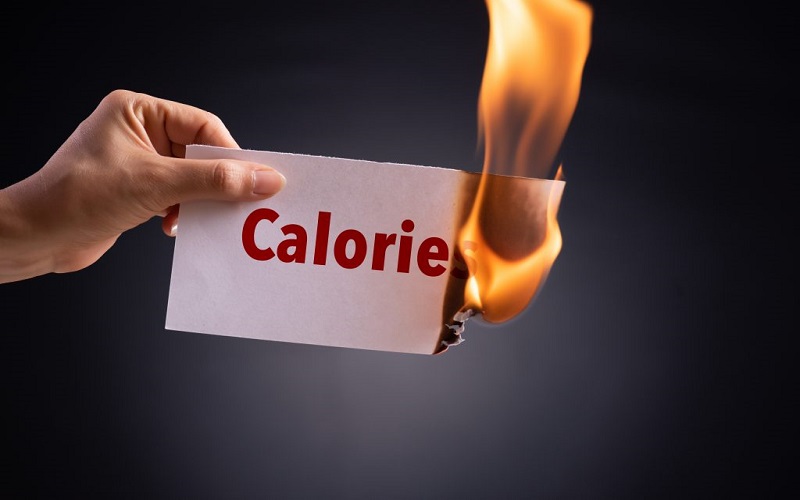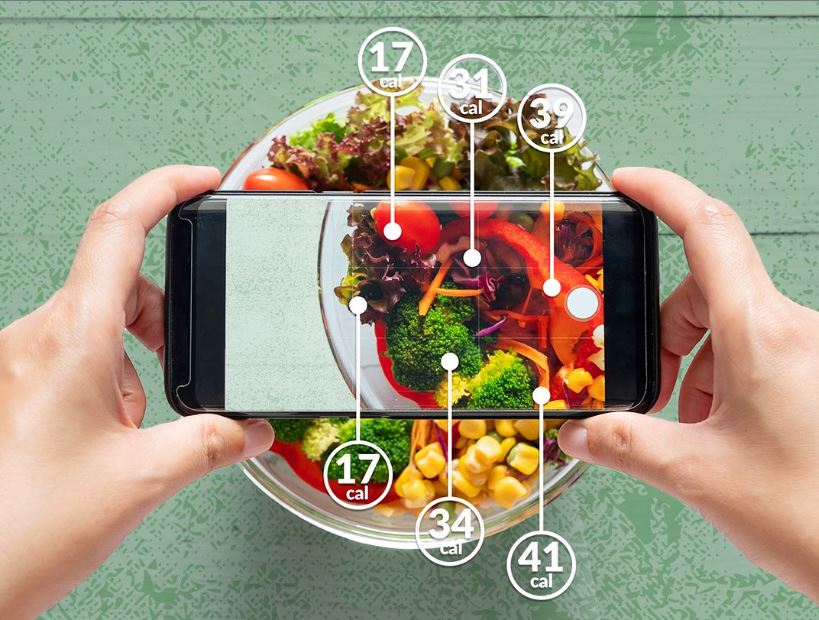Do you know that 60% of the success rate in weight loss or weight gain depends on diet? That's why calculating food calories can provide us a clear understanding of the energy we consume daily. It is also the first step towards any healthy eating plan. Let's explore how to calculate this with Soumaki, shall we?
What is the purpose of calculating food calories?

If you're concerned about nutrition, you can't overlook calories. Calculating food calories is a great way to manage your diet effectively. With this information, you can achieve weight loss goals, maintain your weight, and control your daily food intake.
You can easily calculate the calorie content by checking the nutrition label on packaged food items. If you want to calculate the calories in a homemade meal, you can use online calorie calculators or mobile applications to find calorie information for each ingredient and calculate the total calories based on the percentage of each component in the dish
How to calculate the calories in food
Calories in food are calculated based on their nutritional components, including protein, fat, carbohydrates, and fiber.
-
Each gram of protein and carbohydrate provides approximately 4 calories.
-
Each gram of fat provides approximately 9 calories.
-
Fiber does not provide calories as the body cannot digest it.
However, not all fats have a negative impact on health. Unsaturated fats and monounsaturated fats can be beneficial, while trans fats can be harmful. Similarly, not all proteins and carbohydrates are equally healthy. Here are the basic steps to calculate calories:

1. Identify the nutritional components
Check the nutrition label on the packaging of the product or search for calorie information of the components in the food.
1.1. Determine the components
Identify the weight or quantity of each nutritional component in the food. You can use measuring spoons, a scale, or other measuring tools to measure the amount of food.
1.2. Calculate the calories
Multiply the amount of each nutrient (protein, fat, carbohydrates) by the corresponding number of calories per gram. Then, add up the total calories from all the components.
For example, if a food item contains 100 grams of protein, 50 grams of fat, and 150 grams of carbohydrates, and each gram of protein provides 4 calories, each gram of fat provides 9 calories, and each gram of carbohydrate provides 4 calories, you can calculate as follows:
-
Calories from protein: 100 grams x 4 calories/gram = 400 calories
-
Calories from fat: 50 grams x 9 calories/gram = 450 calories
-
Calories from carbohydrates: 150 grams x 4 calories/gram = 600 calories
The total calorie content of the food will be the sum of all the components:
Total calories = 400 calories (protein) + 450 calories (fat) + 600 calories (carbohydrates) = 1450 calories
Therefore, the calorie content of this food item is 1450 calories.
See more: What to eat to lose weight: Balancing health and deliciousness
How to calculate calorie intake for weight loss
To calculate calories for weight loss, you need to determine your daily calorie goal based on your weight loss target. A common method for weight loss is to create a calorie deficit by consuming fewer calories than your daily expenditure.
Here are the steps to calculate calories for weight loss:
1. Determine your weight loss goal
Set a weekly weight loss goal, for example, 0.5 kg or 1 kg.
Create a daily calorie deficit ranging from 500 to 1000 calories to achieve your weight loss goal.

2. Calculate the required daily calories
A popular approach is to multiply your desired weight (in kilograms) by a corresponding factor:
For example: if you want to lose 0.5 kg per week and your desired weight is 70 kg, the daily calorie intake would be 70 kg x 22-25 calories = 1540-1750 calories per day.
Here is a reference table for calculating calorie intake for weight loss:
2.1. For men
|
Object
|
Age (years)
|
Low activity (calo)
|
Moderate activity(calo)
|
High activity ( calo)
|
Male
|
2-3
|
1000-1400
|
1000-1400
|
1000-1400
|
|
4-8
|
1200-1400
|
1400-1600
|
1600-2000
|
|
9-13
|
1600-2000
|
1800-2200
|
2000-2600
|
|
14-18
|
2000-2400
|
2400-2800
|
2800-3200
|
|
19-30
|
2400-2800
|
2800-3000
|
3000
|
|
31-50
|
2200-2400
|
2400-2600
|
2800-3000
|
2.2. For Woman
|
Object
|
Age (years)
|
Low activity (calo)
|
Moderate activity(calo)
|
High activity ( calo)
|
Female
|
2-3
|
1000
|
1000-1200
|
1000-1200
|
|
4-8
|
1200-1400
|
1400-1600
|
1400-1800
|
|
9-13
|
1400-1600
|
1600-2000
|
1800-2200
|
|
14-18
|
1800
|
2000
|
2400
|
|
19-30
|
1800-2000
|
2000-2200
|
2400
|
|
31-50
|
1800
|
2000
|
2200
|
3. Creating a caloric deficit
To lose weight, it is necessary to create a caloric deficit, which means consuming fewer calories than the calculated daily intake. A common caloric deficit range is 500 to 1000 calories per day, leading to a weight loss of 0.5 to 1 kg per week.
For example: if the calculated daily intake is 1430 calories, you can aim to reduce your intake by 500-1000 calories to create a deficit. Therefore, the daily calorie consumption for weight loss would range from 930 calories to 1430 calories. Additionally, incorporating daily physical activity can help maximize the caloric deficit.
Here are some common types of physical activities and estimated calorie expenditure per hour for a person weighing around 70 kg:
-
Running: 600-900 calories
-
Swimming: 500-700 calories
-
Cycling (fast pace): 500-750 calories
-
Aerobics: 400-600 calories
-
Zumba: 400-600 calories
-
Soccer: 400-600 calories
-
Basketball: 400-600 caloriesYoga: 200-400 calories
-
Brisk walking: 300-400 calories
-
Dance fitness: 300-400 calories
Note: The above figures are estimates and may vary depending on the intensity and individual fitness levels. Body weight and physical condition can also affect calorie expenditure.
How to calculate calories for weight gain
When you want to gain weight, you also need to go through certain steps, including setting a weight gain goal and calculating the necessary calories, similar to when losing weight. However, it's important to note that you need to create a calorie surplus per day, not a calorie deficit as when losing weight. A common calorie surplus range is from 300 to 500 calories per day to gain around 0.25 to 0.5 kg per week.
Food Calorie Tracking Apps You Should Know
Soumaki introduces you to two calorie tracking apps below
1. MyFitnessPal App

MyFitnessPal is widely used worldwide, not only by trainers or athletes but also by many individuals concerned about maintaining weight and health.
One of the notable features of this app is its daily weight goal summary. This summary provides an overview of your progress and reminds you to stay on track with your weight management. This can help you monitor your progress and ensure you are working towards your goals.
Other prominent features include:
-
Easy provision of nutritional information for your recipes.
-
Suggesting healthier food choices for your diet.
-
Diverse and extensive food database.
-
Creating your own meals, recipes, and personal food entries.
-
Automatically calculating the calorie, carbohydrate, fat, and protein content in your food, meals, and recipes.
2. SparkPeople App

SparkPeople is a mobile app that helps you track calories and nutritional content in your diet. It not only allows you to calculate calories in food but also provides various tools and resources to support your weight loss goals and maintain a healthy lifestyle. Additionally, SparkPeople integrates features such as tracking daily steps, sleep, and stress levels to help users maintain a balanced and healthy lifestyle.
Some other notable features include:
-
Allowing you to log your daily food intake and calculate consumed calories. You can search for food in their database and record the quantity and type of food you've consumed to track your calorie intake.
-
SparkPeople provides tools for meal planning, setting calorie goals, and tracking your progress.
-
Recording daily physical activities. You can track the duration and type of activity, calculate the calories burned from that activity, and monitor your progress in achieving your fitness goals.
-
An active community where you can participate in forums, discussion groups, and connect with others who share similar goals. You can receive encouragement, share experiences, and receive support from this community.
Conclusion
To sum up, utilizing a calorie calculator to track and manage your daily calorie intake is essential for successful weight loss. Understanding how calculating food calories in food allows you to make informed decisions about your diet.
Combined with maintaining a healthy lifestyle and regular physical activity, managing calorie consumption will bring you closer to your weight loss goals.